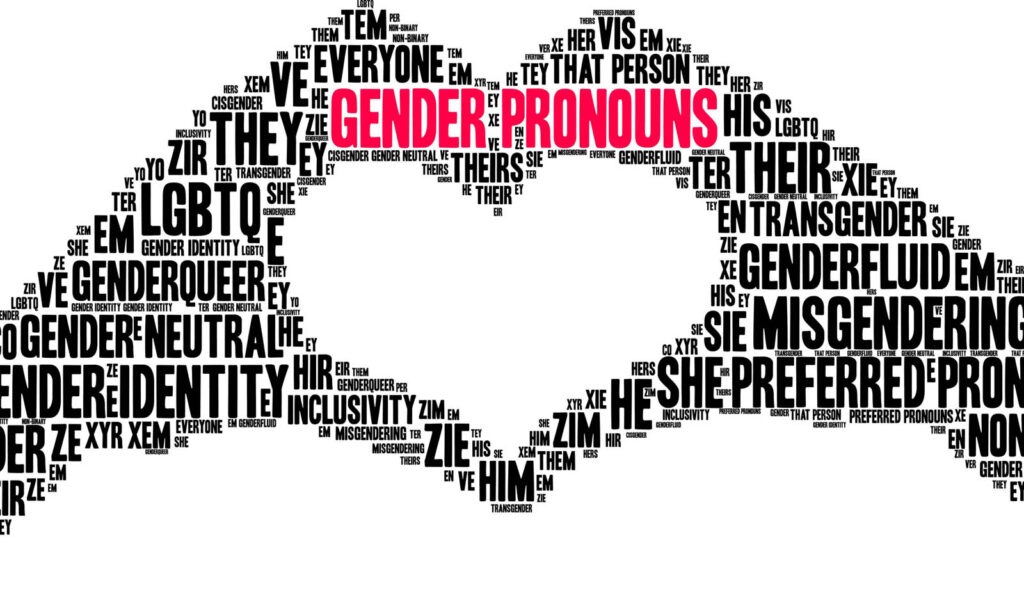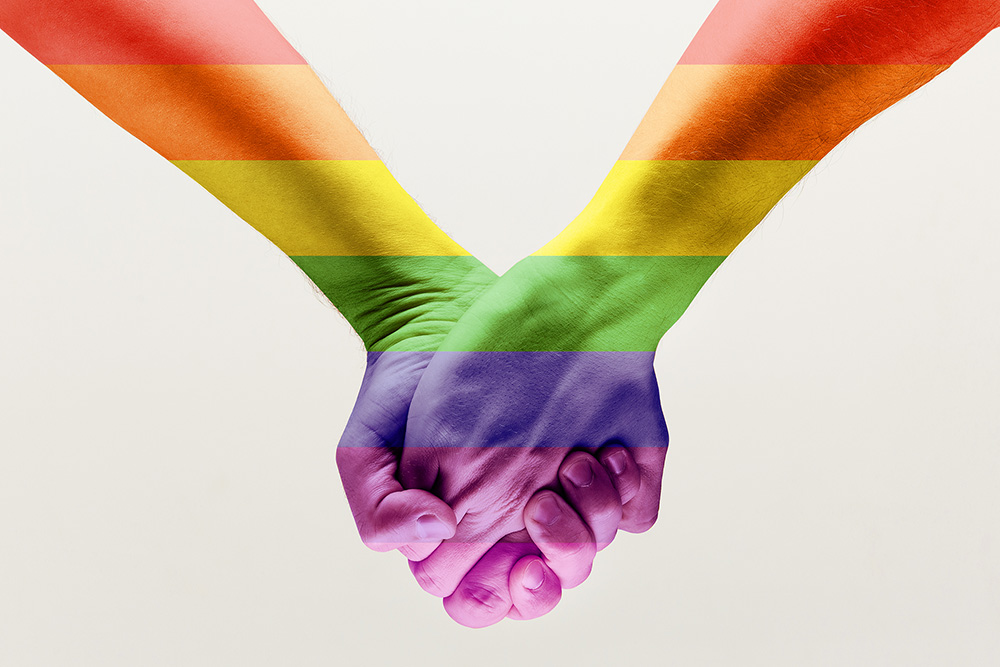
The Barriers to Healthcare for the LGBTQ+ Community
Filed Under: LGBTQ+, Healthcare

Meagan Carruth
Alum, Quantitative Research
(Updated May 2024)
We all rely on healthcare at some point in our lives – and many of us don’t give it a second thought; we take our healthcare for granted. But there are so many others who do not have access to medical advice and treatment. The reality is that disparities exist and not all healthcare is created equal. This is the case for the LGBTQ+ community, who face many more barriers when it comes to healthcare. But there are ways that healthcare providers can address these barriers and ultimately start to close the gap of disparities for the LGBTQ+ community.
LGBTQ+ Community Healthcare Access
When someone from the LGBTQ+ community is seeking healthcare, in some cases, some providers have the option to include the phrase “LGBTQ Allied” in their profile or description. This seemingly small indicator can be a huge sense of relief for many folks in the LGBTQ+ community, but it also raises a host of questions…
- What does “LGBTQ Allied” mean in a healthcare setting?
- Does it mean the provider is a member of the LGBTQ community?
- Are they properly educated in caring for the many groups within the LGBTQ+ community?
- Or does it simply mean exactly what it says – they are an “ally.”
- On the other hand, what does it mean when a provider excludes this phrase from their description?
While this may seem like an unnecessarily complicated sequence of questions, they are not uncommon and ultimately stem from a fear of feeling unsafe or unheard. Making intentional statements such as stating explicit support for the LGBTQ+ community is a meaningful step that healthcare providers can take to prioritize care for the underserved, who often find themselves trying to overcome many barriers.
Barriers Within The Healthcare Setting
- Trans healthcare – “Trans broken arm syndrome” and access to care for minors
- The transgender community frequently faces discrimination and stigma when seeking healthcare. Starting at the level of access to care, members of the transgender community are disproportionately more likely to be uninsured or underinsured. In addition, when trans folks are able to access health care, nearly half experience a negative interaction with a health care provider. While there is a multitude of reasons for this, one of them is called the trans broken arm syndrome.
- The phenomenon of “trans broken arm syndrome” means that “…a healthcare provider – consciously or not – assumes all manner of medical issues are a result of a person being trans,” (i.e., A provider refusing to provide care for a trans person’s broken arm because they ‘aren’t sure how to care for trans patients’). Many trans people must disclose that they are trans in healthcare settings to update gender, surgery, medication, etc., information while giving their medical history. This necessitated vulnerability exposes trans folks to possible discrimination that a cisgender person would not experience.
- The quality of care trans folks receive, however, ultimately depends on whether they have access to gender affirming care, “a model of care which includes a spectrum of ‘medical, surgical, mental health, and non-medical services for transgender and nonbinary people’ aimed at affirming and supporting an individual’s gender identity.” This can look like aiding trans youth in socially transitioning, providing hormone blockers or hormones, and, in few cases, gender affirming surgery. These forms of care are aimed at promoting the well-being of trans minors, who are “2-2.5 times as likely to experiences depressive symptoms, seriously consider suicide, and attempt suicide compared to their cisgender LGBQ peers.” As of January, 2024, 23 states have laws or policies that restrict a minor’s access to gender affirming care. These restrictions vary by state and range from banning surgical care to criminalizing physicians who provide care. In some states, parents, teachers, and counselors also face legal consequences for “promoting” gender affirming care, creating substantial barriers to healthcare for trans youth.
- Not asking inclusive questions/using inclusive language
- In healthcare settings, it is important to ask intentional questions, use inclusive language, and refrain from making assumptions. By doing so, providers will foster a feeling of inclusiveness and trust with their patients. Research has shown that the best way to do this is by asking open-ended questions. Below are some examples of terms or questions that use inclusive language:
- “What are your pronouns?” rather than assuming a person’s pronouns based on perceived gender. If the provider is comfortable doing so, they could introduce themself with their own pronouns as well.
- “What is your current gender identity? What sex were you assigned at birth?” instead of “what is your sex/gender?”
- “Are you in a relationship? If so, can you describe the nature of the relationship?” instead of “Do you have a boy/girlfriend or wife/husband?”
- In healthcare settings, it is important to ask intentional questions, use inclusive language, and refrain from making assumptions. By doing so, providers will foster a feeling of inclusiveness and trust with their patients. Research has shown that the best way to do this is by asking open-ended questions. Below are some examples of terms or questions that use inclusive language:

- And the list goes on, of course! The article “How to Use Inclusive Language in Healthcare” from the website Nursing License Map does a wonderful job of further outlining specific gender identity, sexual health, romantic and sexual orientation, and reproductive health-related terms/questions. By asking questions with inclusive language, providers are indicating to the patient that they have a certain understanding of issues related to gender and sexuality, thereby letting the patient know that they can feel safe being fully honest and transparent in their answers.
- This level of honesty can increase the quality of care for patients in these communities. Prefacing questions with a disclaimer of “If you don’t feel comfortable answering any of these questions honestly, let me know, and we can talk about it” ensures that the patient feels comfortable and heard. However, it is important to note that healthcare is a two-way street. If a patient is not willing to be honest with their provider, there’s only so much the provider can do with the information they are given.
- Lack of specific knowledge on best practices and standard of care from providers for LGBTQ community
- Medical schools provide approximately five hours of LGBTQ+ related education, with one third offering zero training. This places the burden on future and current providers to do their own research, all while already having limited time with patients and being understaffed, to name a few hurdles. Despite these barriers, it’s important for health care providers to be aware of the differences in care between heterosexual folks and the LGBTQ+ community. According to the National LGBT Health Education Center, some of the major health disparities among LGBTQ+ populations include lower rates of mammography and Pap smear screening and higher rates of:
- HIV and other sexually transmitted infections
- Substance abuse
- Unhealthy weight control/perception
- Smoking
- Depression, anxiety
- Violence victimization
- Medical schools provide approximately five hours of LGBTQ+ related education, with one third offering zero training. This places the burden on future and current providers to do their own research, all while already having limited time with patients and being understaffed, to name a few hurdles. Despite these barriers, it’s important for health care providers to be aware of the differences in care between heterosexual folks and the LGBTQ+ community. According to the National LGBT Health Education Center, some of the major health disparities among LGBTQ+ populations include lower rates of mammography and Pap smear screening and higher rates of:

Closing Thoughts
Given the barriers that LGBTQ+ individuals face, it is not surprising that many purposely avoid using the healthcare system, with one-fifth of LGBTQ+ adults saying they avoid seeking medical care out of fear of discrimination. This leads to poor health outcomes among the community.
In a system that may not always seem accessible to all, it is important to consider and prioritize the needs of marginalized groups to provide equitable healthcare. The task of addressing health disparities within the LGBTQ+ community is undoubtedly daunting, but healthcare providers can start with a few simple things:
- Understand your patients’ health concerns
- Don’t expect your patients to educate you
- Create a welcoming environment
Taking a step back, these three points aren’t specific to the healthcare profession. Every brand should keep this in mind — LGBTQ+ consumers just want to see their unique needs be understood and welcomed by the brands they use.
explore featured
Case studies
